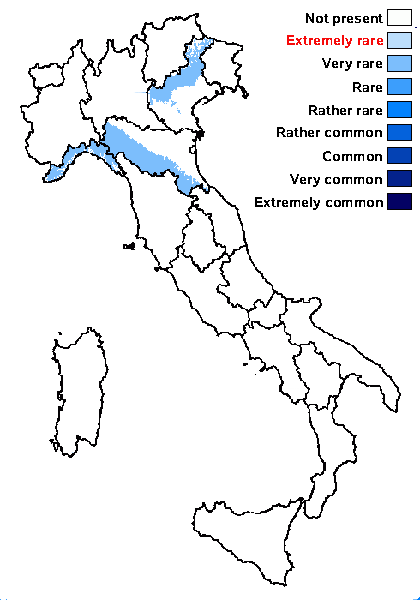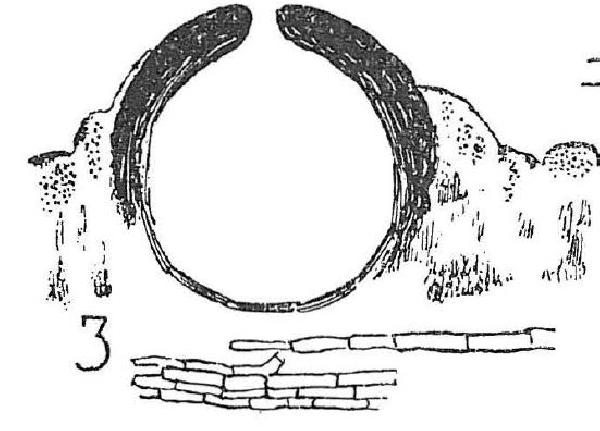Verrucaria apomelaena (A. Massal.) Hepp
Flecht. Eur.: nr. 684, 1860. Basionym: Lithocia apomelaena A. Massal. - Framm. Lichenogr.: 23, 61: 1855.
Synonyms:
Distribution: N - Ven (Lazzarin 2000b), Emil (Fariselli & al. 2020), Lig (Watson 2014).
Description: Thallus crustose, episubstratic, up to 0.25 mm thick, rimose-areolate, without a clear prothallus, the areoles 0.1-0.3 mm wide, brown but often more or less whitish-pruinose, dull, with acute angles, separated by whitish fissures. Cortex very thin, composed by a few layers of cells; algal layer to c. 80 μm thick; medulla white to patchily pale brown, filled by crystals. Perithecia immersed in the largest areoles, completely covered by a thin thalline layer and forming convex-flattened, 0.4-0.7 mm wide warts, the apex c. 0.2 mm wide, with a hardly visible ostiole. Involucrellum reaching to base-level, in upper part adpressed to exciple and up to 60 μm thick, in lower part up to 80 μm thick; exciple globose, up to 0.35 mm across, the wall at first colourless, then often dark brown, thinner in basal part; hamathecium of sparingly branched, 30-40 μm long periphyses and periphysoids, interascal filaments absent; hymenial gel hemiamyloid, I+ red (I+ blue at very low concentrations of I), K/I+ blue. Asci 8-spored, clavate, I-, fissitunicate, the wall thickened above, with an ocular chamber, dehiscent by extrusion of an endotunica to form a delicate rostrum, Verrucaria-type; Ascospores 1-celled, hyaline, ellipsoid, 20-25 x 10-13(-14) μm. Photobiont chlorococcoid. Spot tests: K-, C-, KC-, P-, UV-. Chemistry: without lichen substances.
Note: a rather poorly known species found both on limestone and on calciferous sandstone below treeline.
Growth form: Crustose
Substrata: rocks
Photobiont: green algae other than Trentepohlia
Reproductive strategy: mainly sexual
Poorly known taxon in need of further study
Commonnes-rarity: (info)
Alpine belt: absent
Subalpine belt: absent
Oromediterranean belt: absent
Montane belt: very rare
Submediterranean belt: very rare
Padanian area: absent
Humid submediterranean belt: very rare
Humid mediterranean belt: absent
Dry mediterranean belt: absent

Predictive model
Growth form: Crustose
Substrata: rocks
Photobiont: green algae other than Trentepohlia
Reproductive strategy: mainly sexual
Poorly known taxon in need of further study
Commonnes-rarity: (info)
Alpine belt: absent
Subalpine belt: absent
Oromediterranean belt: absent
Montane belt: very rare
Submediterranean belt: very rare
Padanian area: absent
Humid submediterranean belt: very rare
Humid mediterranean belt: absent
Dry mediterranean belt: absent

Predictive model
 Index Fungorum
Index Fungorum
 GBIF
GBIF


